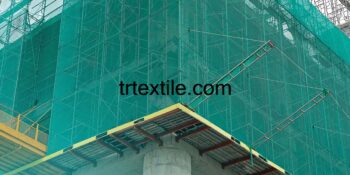Construction safety nets have become an essential component of any construction project, providing a crucial layer of protection for workers and bystanders alike. These nets are designed to catch falling objects or individuals, preventing accidents and injuries on construction sites.
One of the primary benefits of using construction safety nets is their ability to prevent falls from heights. Falls are one of the leading causes of injuries and fatalities on construction sites, and safety nets provide a last line of defense against such accidents. By installing safety nets around the perimeter of a construction site or on scaffolding, workers can work at heights with greater peace of mind, knowing that they have a safety net to catch them in case of a fall.
Safety nets also play a crucial role in preventing falling objects from injuring workers or bystanders below. Tools, equipment, and materials can easily slip or be knocked off ledges or scaffolding, posing a significant risk to those working or passing by below. Safety nets can catch these objects, preventing them from causing harm and ensuring the safety of everyone on the construction site.
In addition to their primary function of preventing falls and falling objects, construction safety nets also offer other benefits. They can help to contain debris and dust on construction sites, reducing the risk of environmental contamination and improving the overall cleanliness of the site. Safety nets can also provide a visual barrier, preventing unauthorized access to certain areas of the construction site and enhancing security.
When it comes to choosing construction safety nets, there are several factors to consider. The type of netting material, the size and strength of the net, and the method of installation are all important considerations. Safety nets should be made from high-quality materials that are able to withstand the rigors of a construction site environment, such as polyethylene or nylon.
Proper installation of safety nets is also crucial to their effectiveness. Nets should be securely anchored to the structure or scaffolding, with no gaps or sagging that could allow objects to pass through. Regular inspections and maintenance of safety nets are also essential to ensure that they remain in good condition and continue to provide reliable protection.
In conclusion, construction safety nets are a vital safety measure that can help to prevent accidents and injuries on construction sites. By providing a reliable barrier against falls and falling objects, safety nets offer peace of mind for workers and bystanders alike. Investing in high-quality safety nets and ensuring proper installation and maintenance can go a long way towards creating a safe and secure working environment on construction sites.


